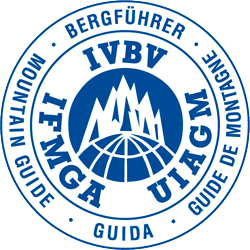ISM Virgin Summits Expedition 2018 Trip Report
Areas visited - Bishkek, Western end of the At-Bashi Range in the Tien Shan, Tash Rabat, Son Kool Canyon and the World Nomad Games in Cholpon Ata
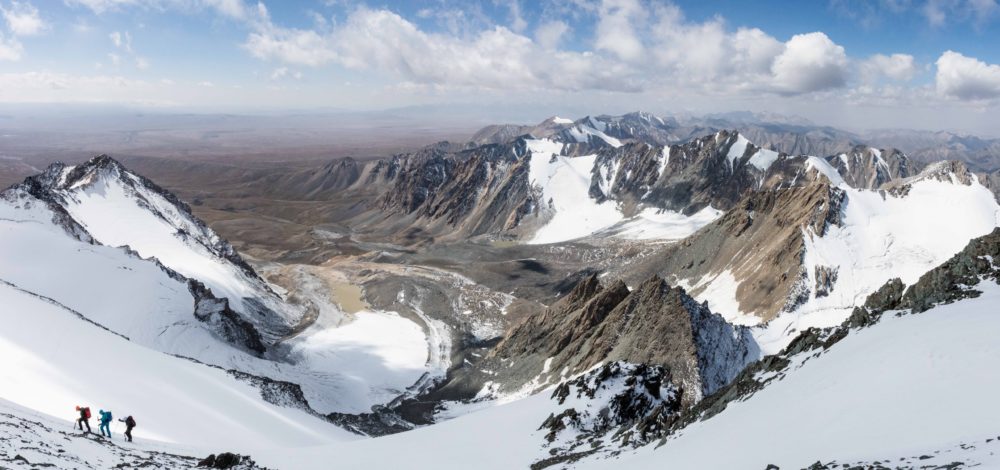
The sun burns my eyes, but looking east out across the lake I see the water sparkles like falling glitter from a sparkler on fireworks night. At my feet, tiny waves one at a time hit the black sand with a crash. There’s a small surge and I step back quickly so as not to get my shoes wet. The sand becomes wet and more blackened in colour in a wavy line across the small beach. I watch as the water drains back into the lake soaking into the sand as it goes and drying out to its original colour. Tiny air pockets pop as if life exists just below the surface. The water that’s left drains back into the lake and almost undercuts the next small wave coming in, forcing it to crash a little harder and the process starts all over again. It’s almost rhythmic as I stand transfixed by nature’s movements. I lean down and pick up a smooth-edged stone, its iron red in colour with tiny white cracks and flecks in. I put it in my pocket. I look up across this vast expanse of water and can just make out the snow-capped peaks on the Kazakhstan border in the bright blue sunlight and cloudless morning. I then look east again and the sparkler is still dropping glitter, then out of the corner of my right eye I see the tents starting to come down and I head back. I now understand why Lake Issyk-Kul is ‘the’ holiday destination for most Kyrgyz, Kazak and many Russian people wanting either a weekend or longer holiday away from the busy cities of Bishkek and Osh.
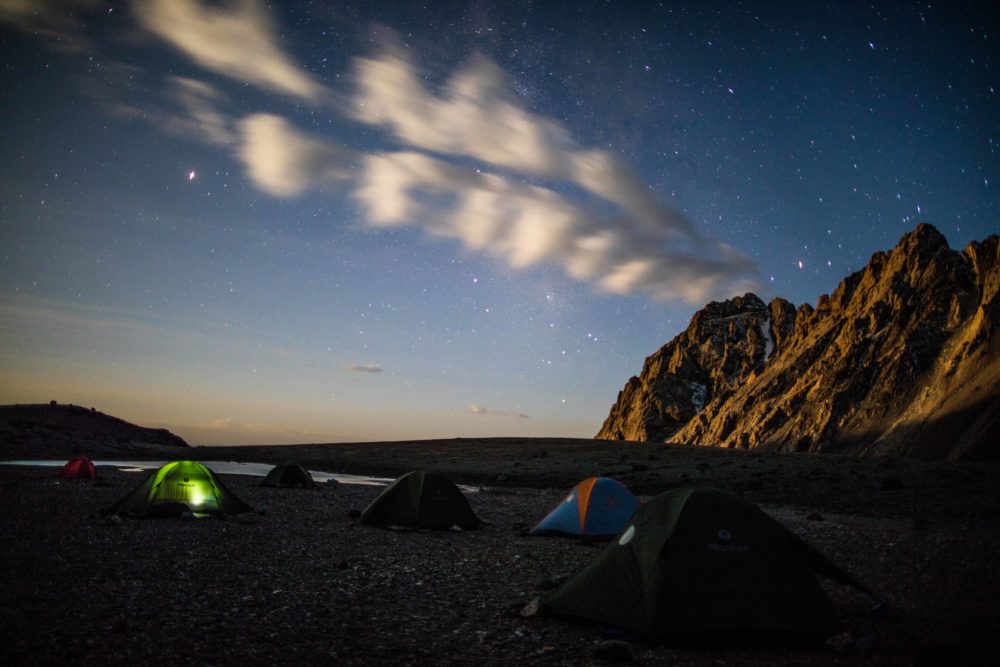
This is such a beautiful place and I haven’t tired from it after almost 20 years. It’s the last day of the trip where we say goodbye to the cook, porters and driver and head to the World Nomad Games for a day, before taking a minibus back to Bishkek and flying home. The World Nomad Games is a treat as the dates have not synched before and is a rare chance to see some eagle hunting, wrestling on horseback and other horse related nomadic team games. But getting here has been another fantastic expedition.
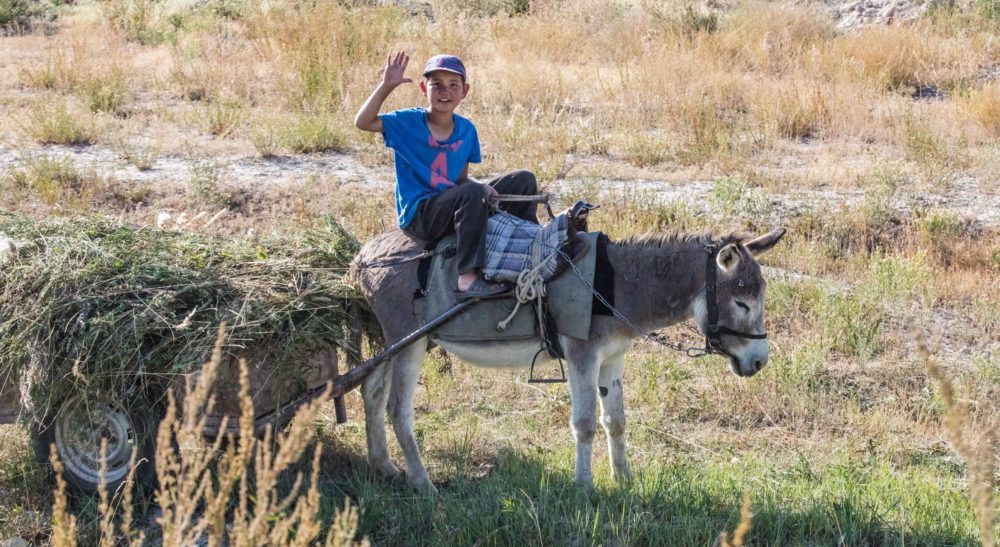
The ISM Team –
Guides: Adrian Nelhams (AN), Max Cole (MC), Tommaso Dusi (TD), Aleksey Potockiy (AP)
Climbers: Mark Aitken (MA), Ruta Mikulenaite (RM), Vincent Gunnarsson (VG), David Woods (DW), Guy Burton (GB), Kamal Kayat (KK), Tony Belgrave (TB), Harry Wilson (HW), Jason Sheldrake (JS)
Cook: Sasha
Porters: Alexey and Ivan
Driver: Alexandre
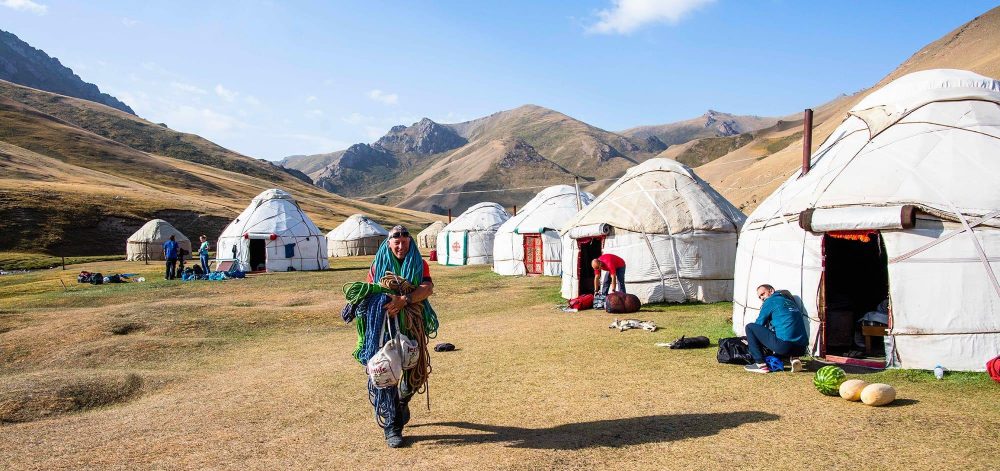
Please note: FA - First Ascent, SA – Second Ascent,
We all met up in Bishkek and the next day on good roads headed to Naryn and then on to Tash Rabat in the At-Bashi District at an altitude of 3,200meters. Tash Rabat is well-preserved 15th century stone ‘caravansari’ and probably the most historical site in Kyrgyzstan. It’s a beautiful example of a caravansari which traders and travellers once used for security on their journey along one of the wilder stretches of the famous Silk Road. ISM has stopped here many times to enjoy some of the cultural aspects, but also to help acclimatise because our basecamp will be around 3700m. There’s some great rock climbing here that we’ve discovered and uncovered over the years. The limestone scenery is amazing, great spines of steep limestone cut across both sides of the valley as you drive in, offering steep ridges, faces and small summits most of which is unclimbed.
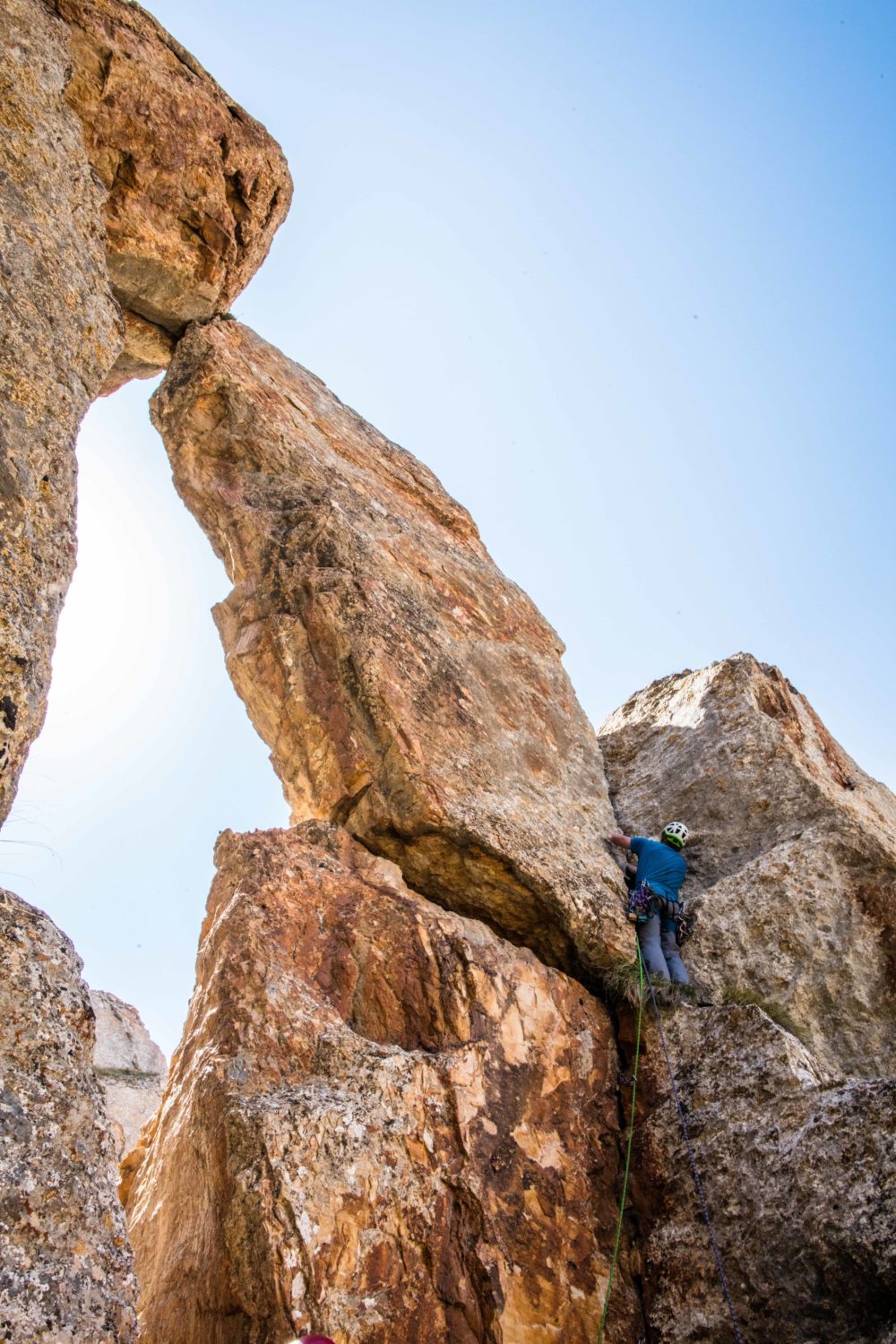
21 Sept: Rock climbing in Tash Rabat
AP, KK, VG
- FA ‘Hang Over’ - Pitch 1, climb a slab and then rightwards trending ramp to a steep corner and crack. Pitch 2, climb the crack and overhang to access the horizontal terrace and easier ground above and then moving left to belay. Pitch 3, climb the obvious and easier corner to the summit – The climbing grade was UK ‘HVS 5a’
MC, TB, GB
- FA ‘Grey Slab’ – Pitch 1, Climb the line of grey slabs trending rightwards to belay under a steep wall. Pitch 2, continue straight up good rock steep at first then easing grey slabs to belay in faint corner crack system. Pitch 3, straight up to summit ridge traverse of to saddle. The climbing grade was UK ‘HS’
- FA ‘Block Route’ – Pitch 1, Steep bold start leading up and left on solid rock, trend right to corner before traverse left to good crack system and belay. Pitch 2, Straight up for 2m before following crack line left until fine position reached on blunt rib, high step leads between large perch blocks then follow up to belay. Pitch 3, trend right to col. The climbing grade was UK ‘VS’
- FA ‘Scoop Route’ – Pitch 1, Climb steep large rib past scoop until large block sling belay is reached. Pitch 2, Trend right over slab to corner up corner then keep traversing right to belay under overhang. Pitch 3, Head up to the right of overhang, soon trending back left over loose rock to belay at steep wall. Pitch 4, Escape left over slab to follow gully line to top. The climbing grade was UK ‘VS’
AN, JS, MA
- FA ‘Hump Back’ - Pitch 1, climb the steep corner crack to its top. , Pitch 2 exposed climbing over the ‘Hump Back’ and then steep climbing on small holds to the top – The climbing grade was UK ‘HVS 5a’
- FA ‘Dorsal Rib’ - Pitch 1, an open buttress climbing slabs, becomes a very narrow, steep sharp arete, climb this to its top. Pitch 2, easier but exposed ground leads to where it steepens again. Pitch 3, steeper ground linking some cracks, corners and a short chimney leads to a small independent summit – The climbing grade was UK ‘Severe’
TD, RM, HW, DW
- FA ‘Dorsal Rib’ variation – Pitch 1 head around the south side of the buttress and climb broken ground to the top joining Dorsal Rib, follow Dorsal Rib to the top – The climbing grade was UK ‘HVD’
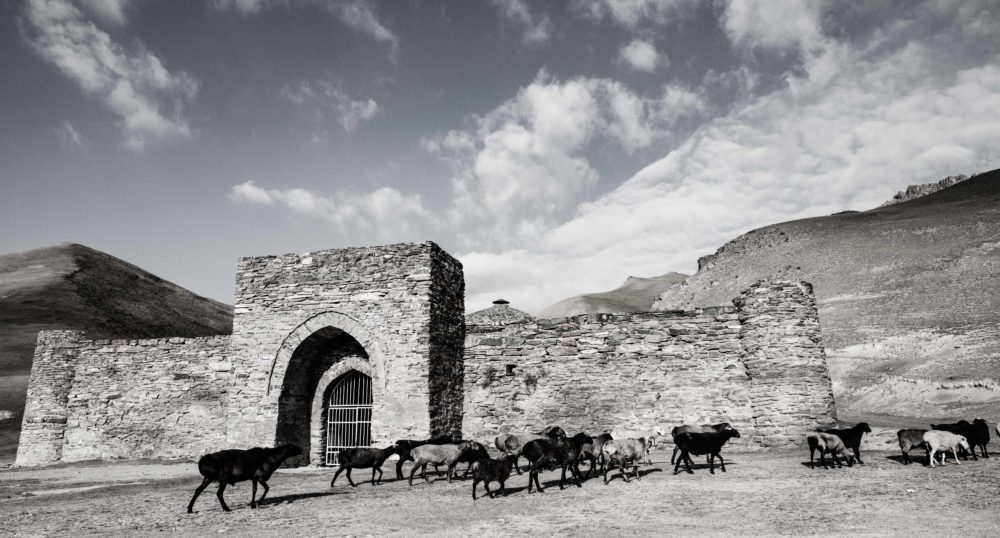
We then spent another night at the yurt camp in Tash Rabat right next to the caravansari.
The following day we packed up and drove to the Torugart Pass which is the border to China and then headed east around the western most edge of the At-Bashi Range and up a very wide open valley running parallel to the Chinese border. This whole area was militarised and a no go area during the 70’s but more recently westerners like ourselves can obtain permits and freely roam here.
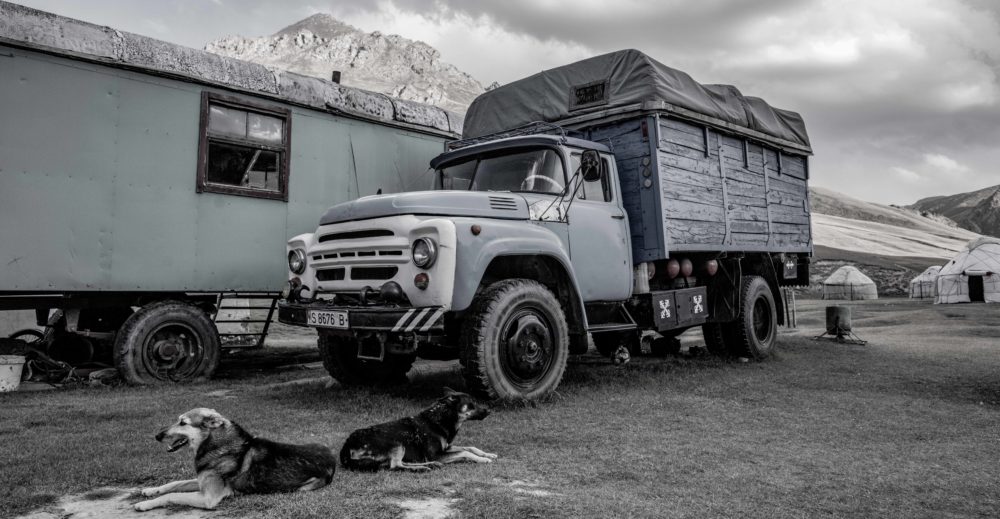
Rusted, disused and dilapidated lookout towers punctuate the four layers of barbed wire fence running along the border as we drive east. Very soon we see some familiar sights, summits, glaciers and valleys we’d climbed in previous years and then the dazzling ‘White Lady’.
We reccied this area on the way back from our expedition in 2017. We had a spare day at the end of the trip and not wanting to waste any time we went in and climbed a couple of unclimbed summits to see what possibilities there were for another trip. We also wanted to get a better view of what we called the ‘White Lady’, as it’s the highest point marked on the map in this part of the western end of the At-Bashi Range. Several of us were mesmerized by this beautiful peak in 2017 and were very keen to explore it in 2018. It almost felt like the last part of a complex jigsaw which ISM has been piecing together over the past 10 years.
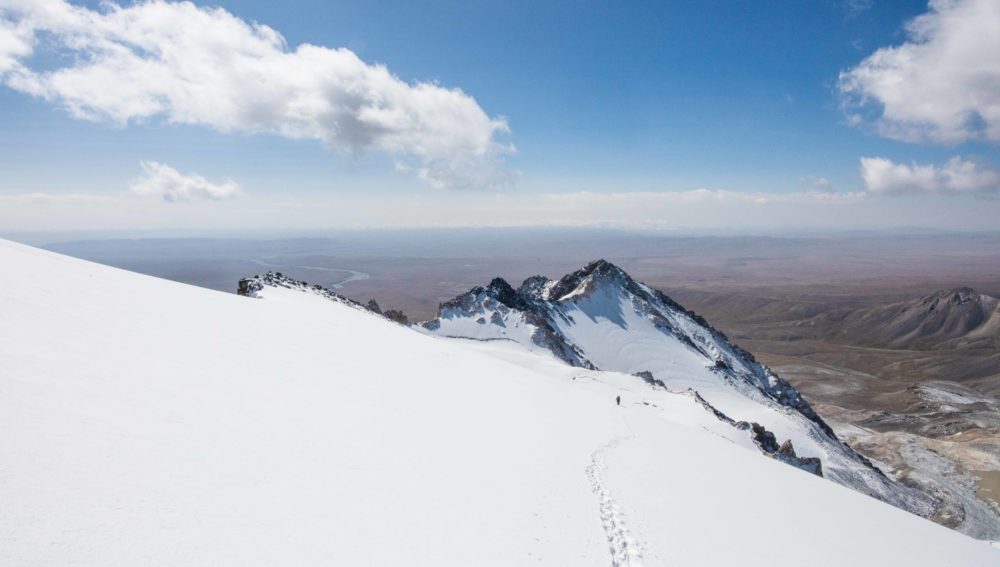
On the 22 August we arrived in the western end of the At-Bashi Range and set up basecamp (BC) at 3728m
23 Aug: We made a recci of the two main valley systems, the glaciers and access to some of the objectives we’d seen. We identified a good place for an advanced basecamp (ABC) to spend the coming week or so.
24 Aug: To help with acclimatisation, we all set off from BC to climb a peak that we’d previously climbed in 2017. After summiting we continued along a very jagged limestone ridge with some fun rock towers and small gendarmes up to a higher second prominent summit.
SA - Pk 4152m (second Ascent FA 2017)
FA - Nomad Peak 4263m
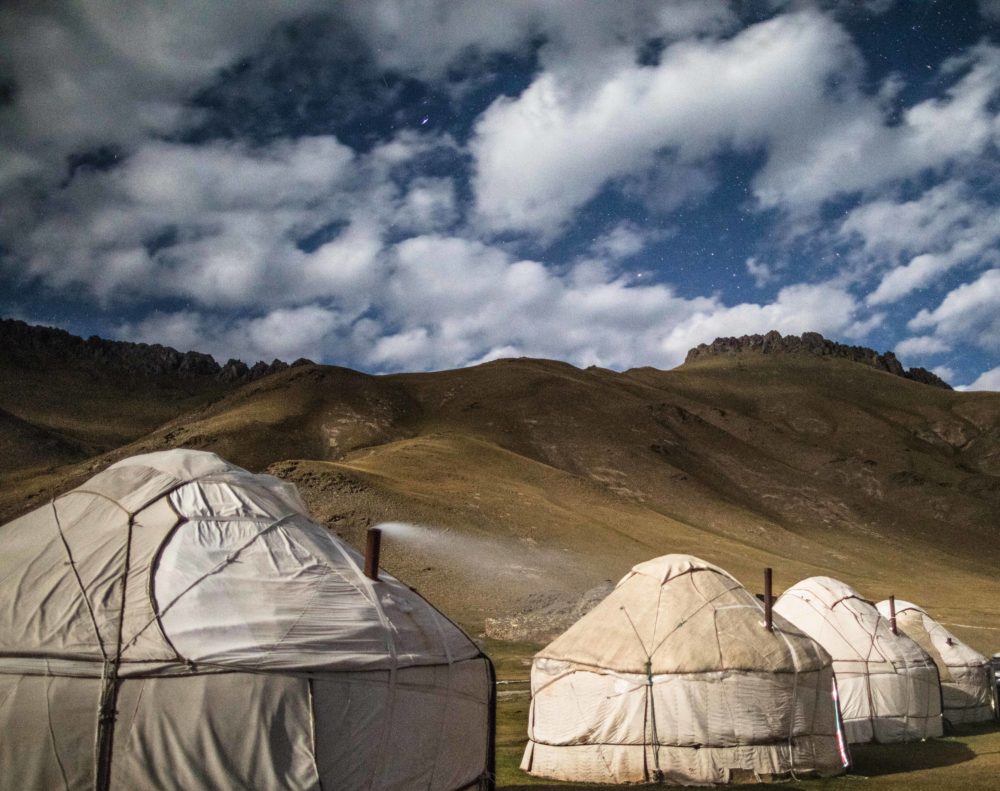
25 Aug: We established ABC at 4040m. We named this camp Marco Polo after finding an old skull of this central Asian large wild sheep, complete with long, spiralling horns.
26 Aug: In mixed weather with little visibility, we made a second ascent of a summit that we first climbed in 2017 when there on the recci.
SA - Vulture Peak 4516m
27 Aug: Beautiful weather and conditions allowed the group to climb the highest summit in the area which we continued to call the ‘White Lady’. On descent from the ‘White Lady’ we also managed to link up a col from low down on the glacier and climb a rocky ridge which gave access and some fun climbing to a very improbable rocky tower when viewed from both ABC and BC
FA - White Lady 4768m
FA - Rabbit Ear 4420m
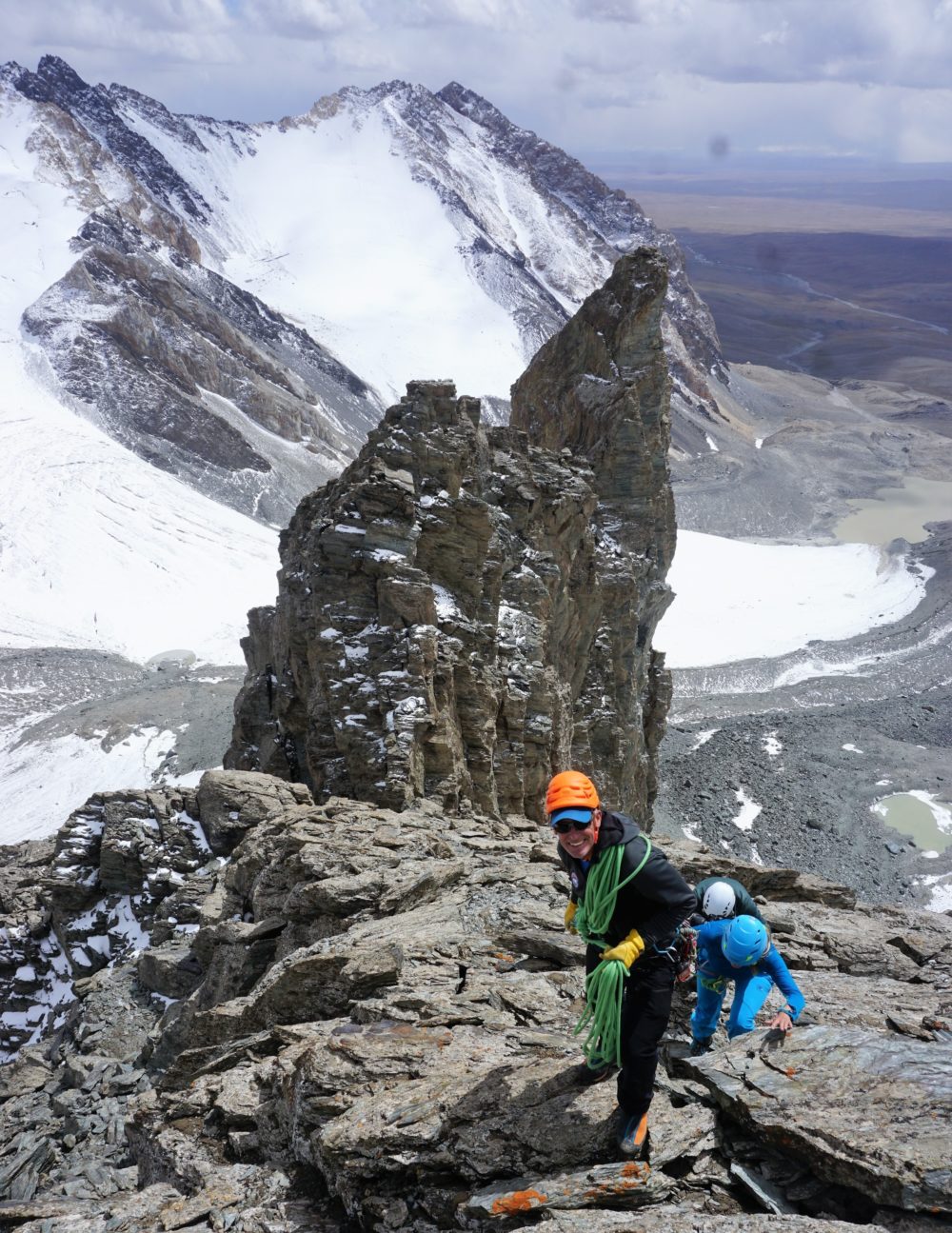
28 Aug: Mixed weather all day saw three groups heading up to the same mountain via different glaciers. A small window in the weather saw only two of the groups summit via some steeper rock climbing on the south ridge to a narrow rock tower and summit. The teams quickly turned around as the weather changed and electricity was felt charging in the air close by the summit. The third group ascended the lower northerly subsidiary summit and then reached the col about 20 metres below the main summit before retreating due to the electrical static activity and risk of lightening.
FA - Black Spark 4520m
29 Aug: Two teams headed up two different glacial systems, one up the main glacier just south of the ‘White Lady’ which allowed them access to the rim of the valley and then to ascend Black Spark, having been thwarted by electrical discharge risks the previous days. This team then descended 'Black Spark' and had some fun rock climbing on several steep and exposed towers, achieving two unclimbed peaks. The other team headed up the smaller glacier south again to an unclimbed summit (Rider Peak) situated in the top corner of that glacier and sitting on the same ridge and just south of 'Black Spark'. That team then continued along more rocky terrain climbing the North ridge of Striped Peak.
FA - Yellow Tower Peak 4550m
FA - Twin Tower Peak 4585m
FA - Rider Peak 4496m
FA - Striped Peak 4504m
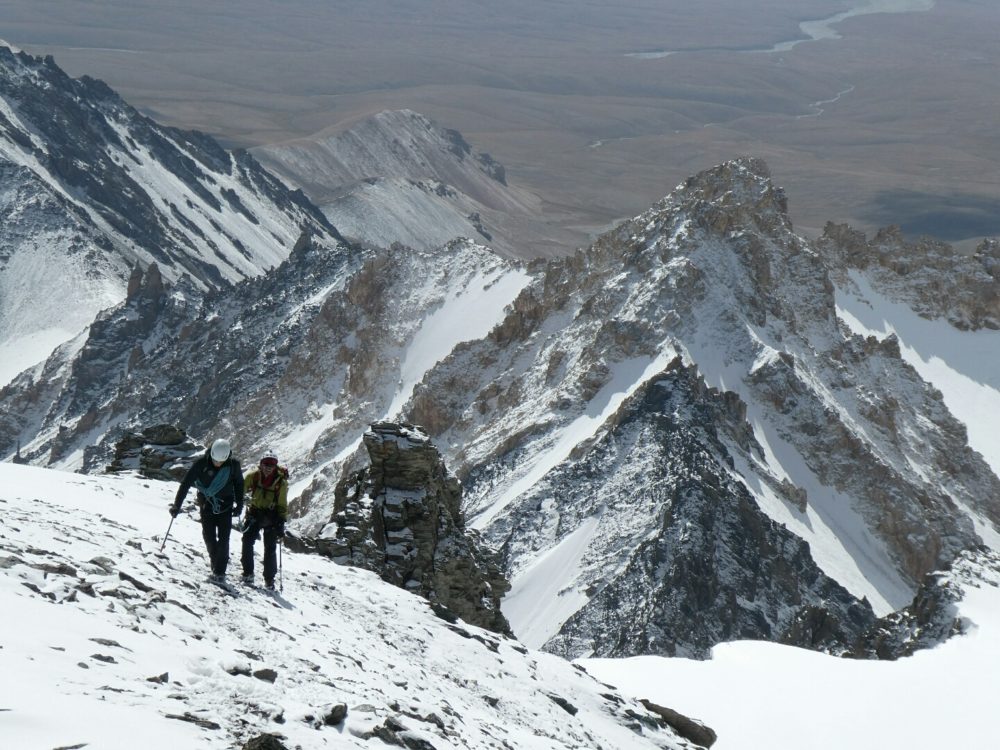
30 Aug: A split in the teams saw one group heading down to BC and then exploring further east into another valley and summiting a peak in ‘isolation’ giving great views of the range, whilst the other group remained at ABC and climbed the two final remaining obvious summits that you could see above BC further west. The two peaks had a very different character offering some good rock scrambling and climbing on compact rock.
FA - Isolation Peak 4455m
FA – Castle Peak 4614m
FA – Keep Peak 4608m
31 Aug: We dismantled BC and in the afternoon drove and camped in Tash Rabat again.
1 Sept: We continued the long drive to the high, steep and exposed walls of Son Kool Canyon and camped at the most southern end of the canyon next to Son Kool River.
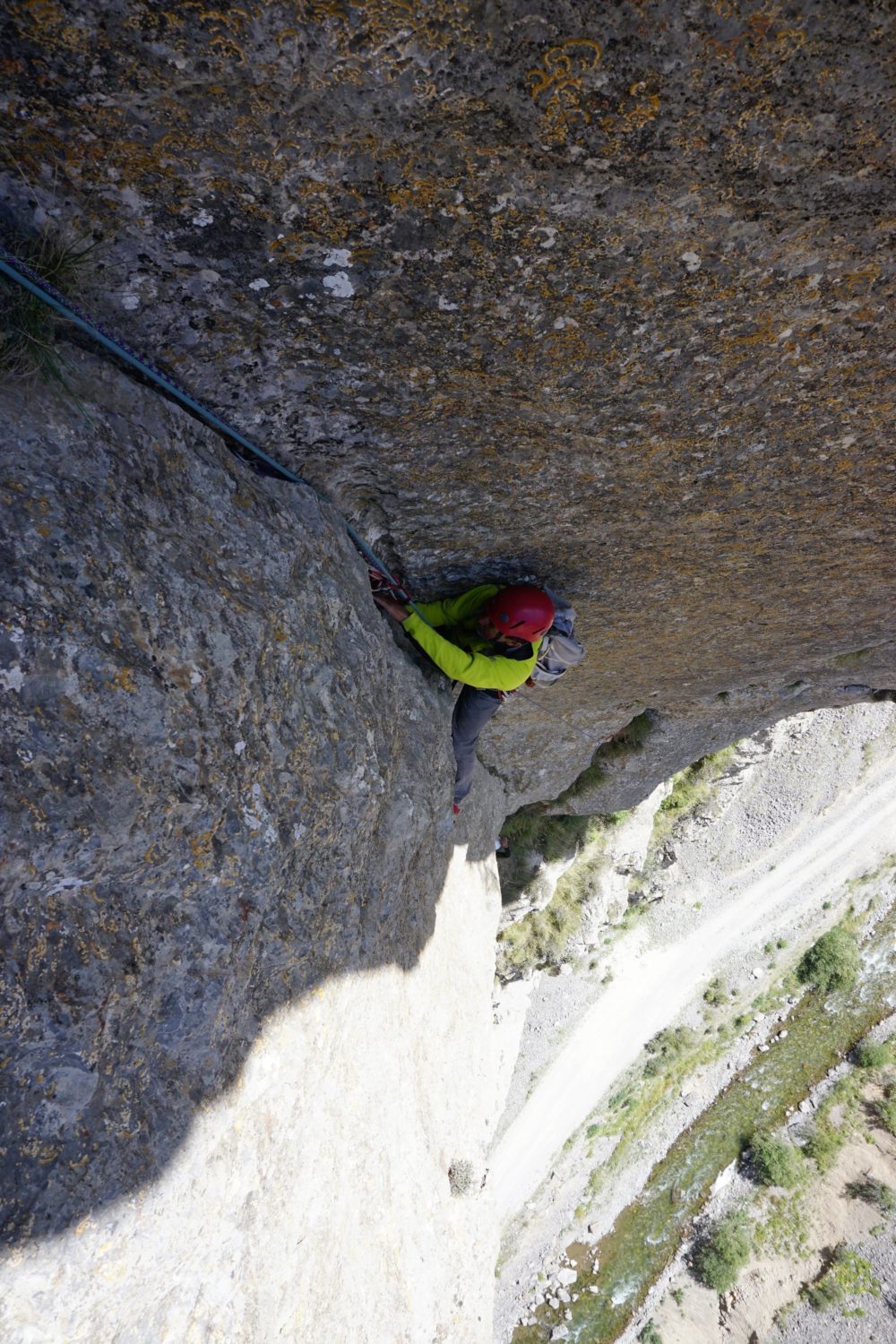
2 Sept: Rock climbing in the magnificent Son Kool Canyon.
TD, VG, KK
- Climbed 8 pitches on beautiful grey limestone, linking cracks, slabs and short walls directly to the top of this small summit – route name ‘Sasha Rocks’ n Rolls’. The route’s 15 mins walk from camp and can been seen from the southern-most end of Son Kool Canyon, looking west across Son Kool River to the first limestone summit as you enter the canyon heading north The climbing grade was UK ‘VS 4c’
MC, GB, TB
- Climb 6 pitches, starting on the buttress left of AN,JS,MA, up a crack system to cave belay (Crux), continue up and right into major groove system then follow trending right to a striking corner crack. The climbing grade is UK 'E1 5b'
- Climb a central crack system in a large slab, which is steeper than it looks from below! continue up and abseil off before a loose larger chimney system. The climbing grade was UK 'HVS 5a'
- Climb 3 Pitches via a slab, corner and crack system to a large shelf sometimes awkward. Abseil right of route 2 X 50m to ground. The UK climbing grade was E1 5a
AP, HW, DW
- Climb 8 pitches on broken limestone via short steps, corners and grooves, 100m left of ‘Sasha Rocks’ n Rolls’. Climb broken ground trending leftwards to the ridge and then follow this to the small summit – The climbing grade was UK ‘VD’
AN, JS, MA
- 'Open Book' climbs 6 pitches up a striking buttress starting next to the dirt road that runs parallel to Son Kool River only 5 mins walk from the campsite heading north up the canyon.. An obvious steep open book corner is seen 4 pitches up marking the crux pitch….This pitch is reminiscent of the classic ‘Cenotaph Corner’ in North Wales – The climbing grade was UK 'E1 5b'
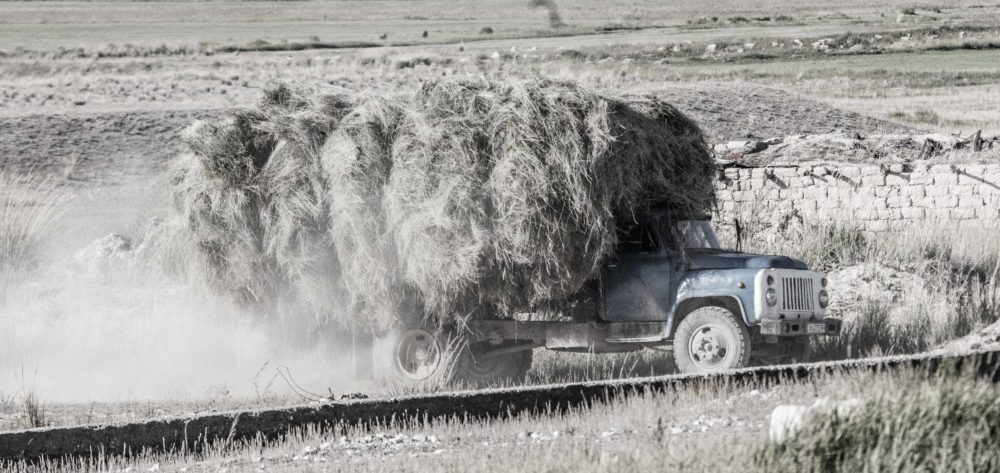
3 Sept: We drive and end up on the shores of Lake Issyk-Kul, camping on a small sandy peninsula jutting out into the lake on the south side close to Kara Shaar. Issyk-Kul is an astonishing 180 kilometres long and up to 60 kilometres wide making it the second largest mountain lake in the world behind Lake Titicaca in South America. It’s at an altitude of 1,607 metres and has a depth of over 660 metres.
It’s been another fantastic trip and that morning I stand there on the shores of this saltwater lake watching the small waves crash onto the black sand beach and the sun putting on a display like falling glitter from a kid’s sparkler. I reflect on what a great trip it’s been and new friendships made….I do love this place…
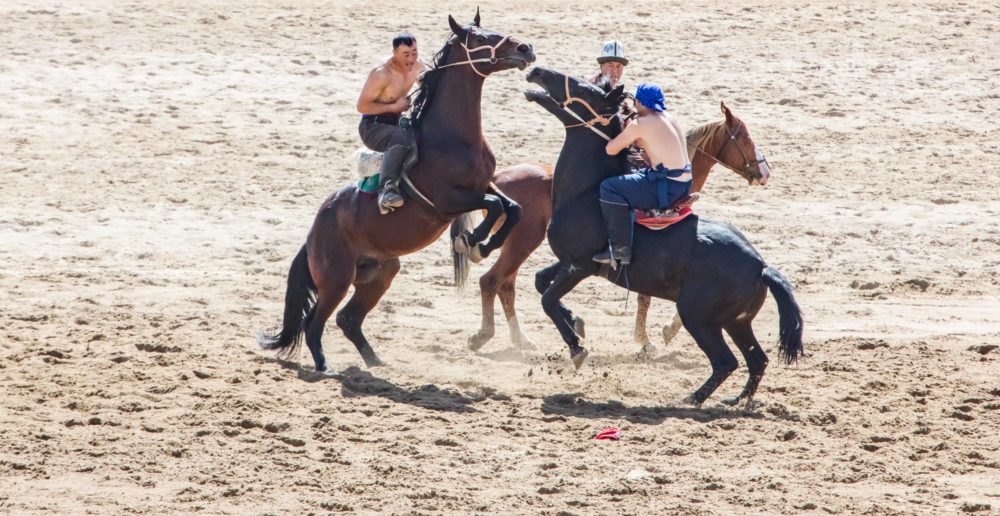
4 Sept: We drove along the north side of Lake Issyk-Kul to Cholpon-Ata to watch the World Nomad Games. This is an international sport competition dedicated to the ethnic sports practised in Central Asia. The countries taking part in those Games were the former Soviet republics of Kyrgyzstan, Kazakhstan, Azerbaijan, Uzbekistan, Turkmenistan, Tajikistan, and Russia as well as other countries like Mongolia, Turkey, Afghanistan, and the United States. We spent the afternoon cheering the Kyrgyzstan team as it beat its bigger neighbours at many events.
5 Sept: We spectated at the Games in the morning and once again enjoyed the unique and heady atmosphere, sights and sounds of this event. By noon it was time to head back to Bishkek and civilisation. During the evening we were hosted by our good friend Vladimir Komissarov (Director of ITMC and President of the Kyrgyz Alpine Club).
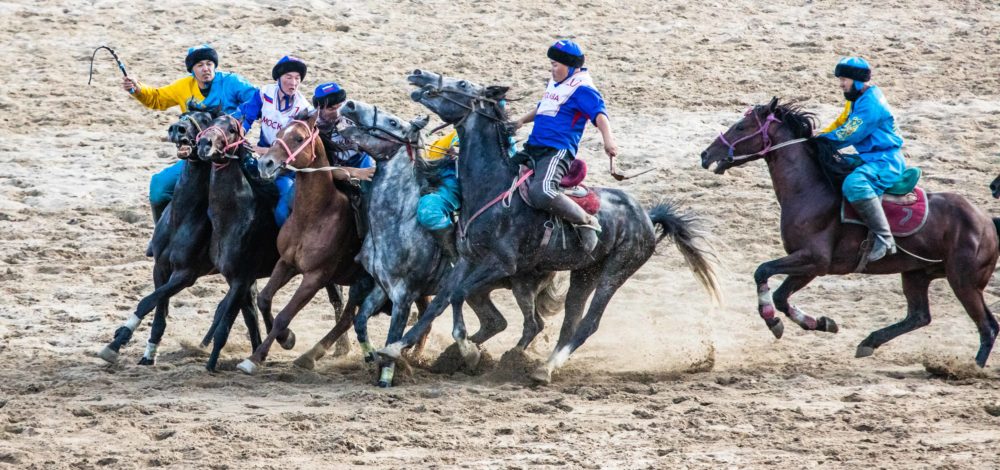
It was a superb evening of talking and laughing, beer and wine and wonderful Kyrgyz food. It was particularly enjoyable to be entertained by a group of talented Kyrgyz musicians who sang beautifully and skilfully used the komuz (a three-stringed lute) and oz-komuz (mouth harp). Kyrgyzstan music is rich and serves as an important symbol of this proud country's heritage. For most of us, this was our last night in Kyrgyzstan before returning home. However it was very clear that many team members were already starting to plan their return to this fascinating country and its beautiful, remote mountains.
Adrian Nelhams - Expedition Leader
Many thanks to Jason Sheldrake for supplying these fantastic images and also Mark Aitkin for his help in pulling together the content.
Related News Articles

ISM Virgin Peaks Expedition 2024 - Tien Shan Kyrgyzstan
ISM trip report of our trip into a very remote part of the Tien Shan Mountains, Kyrgyzstan
Read Article
ISM Virgin Peaks Expedition 2023 – Tien Shan Kyrgyzstan
ISM trip report of our trip into a very remote part of the Tien Shan Mountains, Kyrgyzstan.
Read Article
Kyrgyzstan Faces 2022
This year ISM celebrated 25yrs of expedition climbing in Kyrgyzstan, with a fantastic trip to the Fergana Range in the…
Read Article
ISM Virgin Peaks Expedition 2022 - Fergana Range, Kyrgyzstan
ISM trip report of our trip into the Fergana Range in the Tien Shan Mountains, Kyrgyzstan
Read Article
